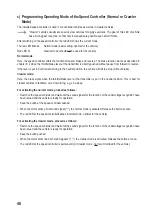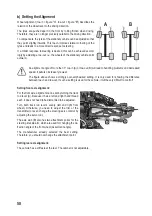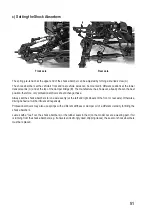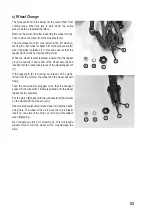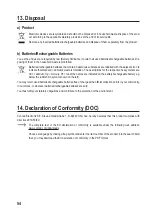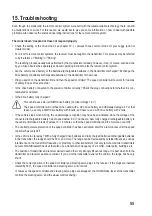
40
8. Charging Rechargeable Batteries
a) Charging the Drive Battery for the Vehicle
•
A rechargeable drive battery is not included in the delivery and must be ordered separately.
•
The rechargeable drive battery is delivered uncharged and must be charged. Several complete discharge and
charge cycles are necessary before the drive battery delivers its maximum power.
• If you are still using "old" NiCd drive batteries, they should be run "empty" at all times, because repeated charging
of a "half-full" NiCd drive battery can cause a memory effect. That means that the drive battery loses its capacity; it
no longer releases all of its stored energy and the driving time is decreased.
For rechargeable batteries with NiMH technology, recharging partially discharged rechargeable batteries does not
cause any problems. Previous discharge is usually not required.
•
We recommend purchasing a high-quality charger. Such a charger usually has a quick-charging feature.
•
Rechargeable batteries heat up during charging/discharging (driving the vehicle). Wait until the rechargeable batter-
ies have reached room temperature before charging them. The same applies after the charging procedure. Do not
use the rechargeable battery in the vehicle until it has cooled down sufficiently after the charging process.
•
Only use a charger suitable for the battery type used.
•
Remove the drive battery from the vehicle for charging.
b) Charging Rechargeable Batteries in the Transmitter
•
The included transmitter may not have a charging socket; observe the included operating instructions for the trans-
mitter. In this case, remove the inserted batteries and charge them externally.
If your transmitter has a charging socket, check whether there are actually rechargeable batteries inserted
in the transmitter before connecting the charger. When charging normal (non-rechargeable) batteries, there
is a risk of fire and explosion!
• Rechargeable batteries in the transmitter must not be quick-charged, as this damages the transmitter and exces
-
sively heats the cells inside the transmitter. Observe the maximum permissible charging current as indicated on the
transmitter or in the operating instructions of the remote control system.
•
We do not recommend to charge batteries directly in the transmitter, it is better to charge them outside the transmit-
ter (using a high-quality charger for individual cells). Here, higher charge currents can be used depending on the
rechargeable batteries.
•
Only use a charger designed for the respective number of cells in the transmitter and the corresponding recharge-
able battery type.
Summary of Contents for Bulldog
Page 114: ...114 ...
Page 115: ...115 ...























